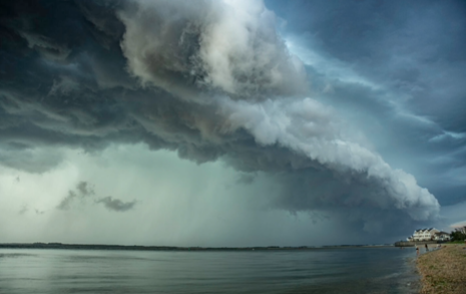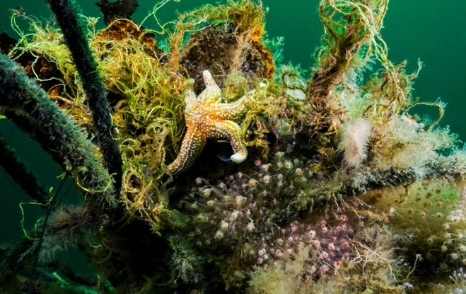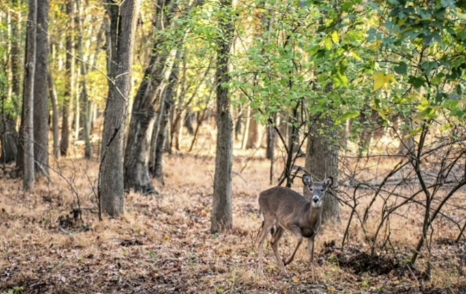Climate Change Research Gaps in New Jersey
Below is a list of climate change research and data gaps identified by the NJ DEP. Filling these gaps will expand our understanding of the potential impacts from climate change and help identify ways to respond and mitigate the effects.
Effects of Climate Change
Impacts of Climate Change
Drivers of Climate Change
- Research is needed to improve the spatial and temporal accuracy of downscaled global climate model outputs, such as datasets that characterize projected future conditions (i.e. temperature, precipitation, sea-level rise, etc.) under different time periods and emission scenarios, for New Jersey.
- Additional research is needed to better understand the types of ecosystems in New Jersey where the capture or loss of carbon, including via the release of methane, is occurring. Measuring and mapping methane production in different wetland types in New Jersey is especially needed. Focus ecosystems would include non-tidal wetlands and the brackish habitats that represent a substantial physiochemical transition from freshwater to saltwater coastal habitat. This information would improve the accuracy of carbon budget calculations in the state.
- It is likely that wildland fire frequency, seasonality, and magnitude will increase in New Jersey with climate change, and given the variability in size and scope of wildland fires the potential range of associated emissions is not well understood.
Temperature
Ambient Air Temperature
- Research is needed to provide a better understanding about why New Jersey is one of the fastest warming states in the country.
- Geospatial analyses are needed to assess the relationship of surface temperature data recorded statewide by satellites and traditional air temperature data recorded at local weather stations. Consideration should be given to the distribution and positioning of weather stations, as there is concern that there is disproportionate coverage of meteorological instrumentation within urban corridors which may misrepresent statewide heat signatures, in which case a modified approach to spatial weighting may be necessary. Such studies may need to be supplemented with additional air temperature sensors installed along relevant gradients (e.g., between land use types, along coastal margins, underrepresented areas between weather stations).
Sea-surface Temperatures
- Increased and continued monitoring and assessment of sea surface temperature data from New Jersey’s coast is needed. Sea surface temperature is one metric of ocean warming and ecological health, so more data from various locations along the coast provides more coverage and is more representative of actual conditions.
Urban Heat Island (UHI)
- Compared to other states, New Jersey has the most miles of roadway per square mile of land area and the highest level of urbanization, both of which are factors associated with the urban heat island effect. Research is needed to help in determining the effectiveness of resilience actions (e.g., tree planting, removed of asphalt, etc.) to reduce the urban heat island effect.
Other
- Research is needed to further understand how persistent climatological temperature shifts and extreme heat events will increase risks of human illnesses from factors like mosquito-borne diseases, household molds, harmful algal blooms, and other vectors.
- More studies are needed to improve our understanding of the drivers of marine heatwaves and their potential impacts on the aquaculture industry, marine fisheries, and marine harmful algal blooms (e.g. red tides).
- A comprehensive literature review is needed to assess how extreme heat and drought could impact the state’s agricultural production, including food quantity, nutritional quality, and the economic impacts. Impacts to urban farms and farmers’ markets should be considered.
- Ectothermic (“cold-blooded”) animals, such as frogs and turtles, cannot regulate their own body temperatures and are vulnerable to excess temperatures that are species-specific. Species-specific studies are needed to evaluate the thermal tolerances of the state’s ectothermic animals and their risks as the state continues to warm.
- Research is needed to improve our understanding of how rising temperatures and extreme heat will affect risks of chemical contaminant (e.g., pesticides) toxicity and exposure. For example, some chemicals enter the air, or vaporize, more easily at higher temperatures. Additionally, some chemicals can break down at high temperatures and may lead to toxic byproducts in the environment.
- Higher temperatures can lead to increased concentrations of air pollutants. An assessment is needed to evaluate the risks of extreme heat and its effects on air quality, especially in urban environments that are more vulnerable to higher concentrations of pollutants.
- Research is needed to improve understanding on how long-term effects from higher temperatures will affect ecosystem carbon sequestration flux, including transitioning from carbon sinks to carbon sources.
Precipitation
- Further research is needed to increase confidence on how the frequency and intensity of precipitation events will change to better inform and plan for flooding and storm water design.
- Improved spatial coverage for sub-daily (hourly) precipitation totals is needed as such storms may be more sensitive to climate warming than longer duration events.
- In order to better plan for coastal and fluvial flooding events, improved modelling is necessary to understand how increased precipitation, increased stream flows, and higher sea levels will interact to compound effects.
- Research is needed to quantify and characterize changes to the frequency and duration of precipitation deficits under future climate conditions to better understand how droughts and drought-like conditions will impact the state and region.
- Further research is needed to understand how changes in tropical and extratropical cyclone patterns will impact the state and region.
- Additional research is needed to understand how wind speeds in storm events (extratropical and tropical cyclones, etc.) may change as a result of climate change.
- Analysis is needed to determine if the long-term snowfall patterns have changed in New Jersey.
Sea-Level Rise
- Updated New Jersey specific projections and scenarios are needed to take into account recent advances, including additional observational data and modeling in the literature, and to better align sea-level rise scenarios with the current Intergovernmental Panel on Climate Change’s (IPCC) framework using Shared Socioeconomic Pathways (SSPs).
- Extensive surveying is needed to improve our understanding of the spatial variability of subsidence and the underlying processes that serve as local drivers of sea-level rise, including the interrelation of subsidence and groundwater withdrawals.
- Further coastal geomorphology modeling is needed to evaluate fluvial impacts from coastal flooding.
- Additional research is needed to evaluate the potential future costs of beach nourishment, coastal armoring (seawalls, groins, and jetties), and dune maintenance under future sea-level rise projections.
Ocean Acidification
- The ecological impacts of ocean acidification on marine organisms, particularly bivalves with calcium carbonate shells which can dissolve in acidic conditions, require further research as we are only beginning to understand the ramifications to species and ecosystems.
- Improved experimental methods are needed to provide for a greater accounting of the intrinsic environmental variabilities and gradients.
- Research is needed to provide methods that can account for compounded community interactions and effects in order to evaluate broader community and ecosystem responses.
Human Health & Communities
Human Health
- Additional assessment is needed to understand the short- and long-term health impacts of extreme heat and extreme weather on people with consideration of diverse communities, different life stages, different occupations, and other factors in New Jersey. Assessments should include the impacts of extreme heat and extreme weather on mental health. Assessment should include those adverse impacts that may occur through direct exposure of the human body to extreme heat or extreme weather, and those adverse outcomes caused by changes to the natural and built environment that adversely impact people (e.g. loss of housing due to flooding caused by climate change; disruption of emergency services; or inability to use outdoor spaces due to extreme heat or weather).
- Nighttime temperatures are increasing faster than daytime temperatures in much of the country. Cooler nighttime temperatures can provide relief to people following high heat days. Assessment is needed on the impacts of increased nighttime temperatures and its impacts on human health, particularly in disproportionately affected communities (i.e. urban heat islands).
- Additional research is needed to understand the potential risks of emerging and existing zoonotic diseases, those passed to humans from other animals, which may increase as a result of climate change. In addition, research is needed to identify the best practices to manage, prevent, and control the spread of zoonotic diseases in New Jersey.
- Research is needed to improve our understanding of how the climate crisis disproportionally harms vulnerable populations (e.g., children, senior citizens, and individuals with acute and chronic diseases) and households that are economically and socially disadvantaged.
- The impacts caused by climate change, specifically increased temperatures and air quality changes, on outdoor recreation and should be studied.
Air Quality
- Additional research is needed to understand how changing ozone levels may be related to changing meteorological effects associated with climate change, such as changes in weather patterns, stalled air masses, increases in humidity, and frequency of afternoon thunderstorms.
- Largescale wildfires, occurring in New Jersey or beyond our state’s borders, can cause increased particulate matter in the air that leads to significant hazards to human health, especially more vulnerable populations (g., children, senior citizens, and individuals with acute and chronic diseases). Assessment is needed to better understand these effects, such as deteriorating interior air quality, and the relation to the triggering of medical emergencies (e.g., hospitalizations), and reducing economic productivity.
Agriculture
- Studies are needed that detail the sequestration rates for crop land, as well as the sequestration potential if farmland is managed to increase carbon sequestration.
- Further analyses of how warmer winter temperatures will impact the chilling hour requirements for fruit crops, and effects on other crop yields, are needed to fill gaps in our understanding.
- Research is needed to improve our understanding of responses to the direct effects of greenhouse gases on air quality, including the ecological impacts of ground-level ozone on crop yields.
- Climate change affects overwinter survival, species distributions, and allows for introductions of non-native or invasive species. Insects, both beneficial and pest-related, are heavily reliant on temperature for development. Research is needed to better understand these impacts, particularly as it drives increased pest pressure on economically important crops.
- Regenerative agricultural practices provide numerous benefits, including enhancing ecosystem services, greater biodiversity, and increasing resilience against effects of climate change. Research is needed to identify practical and economically profitable means of applying regenerative agriculture more broadly within the state.
- Research is needed to assess the numbers of agricultural that have already adopted recommended practices for mitigating the effects of climate change, including compost application, cover cropping, and rotational livestock grazing. An assessment of early adopters would provide practical information towards increasing implementation for other growers, summarize a cost and benefit analysis, and identify areas in need of further research.
- A functioning soil microbiome is the foundation of soil health, and a means of soil carbon circulation and storage that is critical for mitigating the effects of climate change. Studies are needed to better understand these complex mechanisms, the effect of various management techniques on soil carbon storage, and their relationship towards integrating regenerative agriculture that can enhance climate resilience.
Marine Ecosystems
- As part of New Jersey’s goal of 100% clean energy by 2050, with a target of producing 11,000 megawatts of electricity from offshore wind, research priorities have been identified and are presented on the OSW RMI webpage at https://njdepwptest.net/offshorewind/rmi/#research-and-monitoring-priorities.
- As waters warm, non-native fish species may extend their habitats into New Jersey waters. Monitoring should be conducted to determine whether increased non-native fish species or other species of interest are impacting native species.
- Marine waters need to be monitored for the introduction or expansion of Karenia species, which are associated with red tides. These species produce toxins that can bioaccumulate in shellfish tissues.
Marine Fisheries and Aquaculture
- Additional research is needed to understand how shifting species distributions will impact the economics associated with New Jersey’s commercial and recreational fisheries.
- Studies are needed to assess how warmer waters and acidification may impact shellfish food quality, economic losses, and risks to human health.
- Research is needed to assess how the New Jersey aquaculture and fisheries industries will be affected by climate change. Assessments are needed on the relative vulnerability to flooding, extreme heat, and altered biochemistry associated with extended warm periods (e.g. harmful algal blooms, potential for red tides, reduced oxygen availability).
Freshwater Systems
Water Supply and Operations
- With observations and projections indicating a trend towards warmer temperatures, longer growing seasons, and more frequent drought-like conditions, studies are needed to assess how climate change could affect local demands and treatment trains associated with drinking water, agricultural/irrigation, and industrial usage on the state’s water supply.
- Research is needed to assess the adaptability of water supply systems to the multitude of climate change related impacts on drinking water operations. Such critical infrastructure will require economically feasible solutions to ensure climate resilience.
- Assessments are needed to evaluate the risks and thresholds for sea-level rise impacts, such as the magnitude and extent of saltwater intrusion affecting freshwater intakes and groundwater resources.
- An assessment is needed to evaluate the risks and thresholds for sea-level rise impacts to wastewater discharge facilities due to higher water levels causing reductions in flow capacity.
- Research is needed to better predict future climatic conditions for considering how changes to precipitation patterns and streamflow, both dry, normal and wet conditions, will impact the water supplies in New Jersey, including availability of water for surface water reservoirs.
- Further research is needed to identify likely surface water quality impacts resulting from climate change along with the potential for such impacts to affect drinking water treatment and operations.
- Research is needed on how changes in temperature and streamflows may increase the potential of harmful algal blooms (HABs) and the resultant impact on surface water supplies in response to climate change.
Water Resources
- Expanded research and monitoring is needed to evaluate the movement of the salt-front in non-Delaware estuaries.
- Further investigation is needed to estimate how future changes in precipitation patterns, including greater intensity and frequency of dry, warm periods, will likely impact groundwater resources. In particular, baseline monitoring is needed to help identify changes to aquifer water levels, movement of salt water, and water quality.
- Better spatial and temporal data are needed to characterize future frequency, duration, and severity of droughts and drought-like events to improve projections of future streamflow and other drought impacts.
Freshwater Fish, Reptiles, and Amphibians
- Climate change is expected to affect cold water stream habitats by increasing water temperature, precipitation intensities, and the likelihood of drought-like conditions. Such changes are likely to influence interactions between warm-water tolerant fish and native cold-water species. Further research is needed to assess how climate change will affect the ecology in these habitats, such as species behavior, feeding strategies, reproductive success, competition, and other impacts.
- Many species’ ideal habitat conditions may shift in location as a result of climate change. Studies are needed that predict where these habitat shifts should be expected in order to preserve the adjacent areas that will convert to critical habitats for vulnerable species. However, barriers often exist that might prevent these habitat shifts from occurring (e.g. dams, bulkheads, etc.). A comprehensive evaluation is needed to document barriers that are preventing such transitions (e.g., dam removals may alleviate stress of warmer waters for freshwater fish).
- Non-native freshwater fish species may extend their habitats as waters warm. Monitoring and documenting changes to species compositions and population dynamics will be necessary to better understand how changes in climate impact aquatic resources over time.
- The overall vulnerability of reptiles and amphibians to the effects of climate change needs to be assessed in New Jersey. Vulnerability assessments are an essential tool in climate change adaptation planning.
Land
Forests
- If it is determined that snowfall in New Jersey is significantly declining or temporally shifting, information will be needed on how reduced snow and snow melt could impact New Jersey forests.
- An improved understanding of how longer growing seasons or a reduction of cold stretches, which are fatal to some pests and pathogens, could impact forest communities is needed.
- Further research is needed to expand our knowledge on the impacts of climate change stressors, such as increased temperature, sea level rise, and altered precipitation patterns, to forest species compositions and ranges. In order to effectively manage forest ecosystems, we will need to better understand how specific species and their interactions will likely progress in response to extreme heat, more intense severe storm events, and saltwater intrusion, among other climate change effects.
- Research is needed to improve our understanding of responses to the direct effects of greenhouse gases on air quality, including the ecological impacts of ground-level ozone on forest ecosystems.
Wetlands
- Monitoring of freshwater wetlands is needed to understand how water table connections may be impacted by climate change factors including extended drought-like periods or increased saturation.
- The magnitude and direction of changes in wetland acreage and wetland types (e.g., wetland losses, habitat shifts towards drier or wetter, tidal, brackish, or more saline conditions) must be assessed to determine the impacts of climate change on wetlands.
- Baseline data and mapping of brackish marshes in New Jersey is needed to document shifts in their positioning over time as sea levels rise, which is expected to cause significant changes in ecological structure, function, and ecosystem services. Long-term vegetation monitoring data and additional water quality monitoring stations are needed in freshwater and brackish tidal marshes to accurately map the continuum of freshwater to oligohaline to mesohaline (brackish) wetland resources.
- Elevation surveying and local water level datums are needed to better assess the relationship between sea-level rise and elevation change at long-term monitoring sites that use surface elevation tables in the New Jersey Tidal Wetlands Monitoring Network.
Plant Diversity
- Research is needed to better understand phenological shifts, including focused study on the biochemical mechanisms within plants and which plant hormones are being affected by changes in temperature, precipitation, shorter winters, etc.
- High resolution remote sensing from New Jersey state aerial surveys, satellite imagery, and network resources is needed to assist in baseline data collection and assessment of changes in habitat structure associated with climatological change over time.
- An assessment using historic vegetation records and meteorological data is needed to better inform how climatic shifts have driven and are likely to continue to drive species shifts in New Jersey and the Northeast.
Birds, Insects, and Mammals
- The impacts of climate change on habitat availability for shorebirds, particularly migratory species, should be assessed throughout the state.
- More research is necessary concerning variations in abundance and geographic range of insect and arthropod species because of climate change.
- An assessment using historic wildlife population counts and meteorological data is needed to better inform how climatic shifts have driven and are likely to continue to drive species shifts in New Jersey and the Northeast.
Carbon Sequestration
Terrestrial Carbon Sequestration
- Previous studies have shown extreme variability of carbon fluxes in freshwater wetlands, including high carbon burial rates and high carbon emissions. Research is needed to better understand the driving mechanisms of net carbon fluxes in New Jersey’s freshwater wetlands, including forested wetlands and open-canopy wetlands, with an emphasis on microbial activity, soil characteristics, and human disturbance.
- A comprehensive review is needed to compile and evaluate existing data on the impacts of forest management practices, such as thinning and prescribed burning, to net carbon storage. This effort would help to further identify specific data gaps and refine quantification of carbon storage.
- Studies are needed in terrestrial habitats to provide better soil carbon data and detailed information on soil carbon flux, or the exchange of carbon to and from terrestrial habitats, as well as the associated biochemical impacts.
- Evaluation and refinement of New Jersey-specific economic forces influencing carbon sequestration and storage is needed.
- The effectiveness of terrestrial restoration projects is not well documented or understood. Assessments of carbon leakage, or losses, associated with projects intended to increase carbon sequestration and storage are needed. Long-term studies are necessary in order to improve the efficacy of restoration practices for addressing carbon sequestration.
- Research is needed to help develop a carbon sequestration prioritization geographical information system (GIS) application that highlights upland and wetland areas targeted for best management practices (BMP) that includes potential rates of sequestration (MT/CO2e/yr).
- Research is needed to improve our understanding of the carbon sequestration potential of New Jersey’s meadow/grassland habitats.
Coastal Carbon Sequestration
- In order to adequately account for carbon budgeting at the state level to meet our goals of reducing carbon emissions over time, research is needed to improve our understanding of the variability of carbon fluxes in marsh migration zones, particularly as some areas transition into different habitat types.
- More information is needed to determine the carbon storage potential of seagrass beds in New Jersey.
- Coordinated deep core sampling of coastal soils has been limited, requiring interpolation methods to fill in spatial gaps despite high variability. Additional sampling efforts are needed to develop better maps of tidal wetland soils that include carbon density and depth.
- The carbon budget for tidal wetlands is not well understood. Research has indicated that studies often oversimplify the inputs and outputs, as few studies have incorporated groundwater exchange, microbial biomass, and mycorrhizae that can be significant factors of carbon storage and transport. Studies are needed to document tidal wetland carbon storage and transport, including the less understood factors, in order to attain more reliable carbon budgets in tidal wetlands.
- Research is needed to document the carbon sequestration potential of coastal habitats throughout the state in order to develop a coastal carbon sequestration geographical information system (GIS) map highlighting prioritization areas for best management practices (BMP) with CO2e sequestration rates (MT/CO2e/yr).
- Research on the effectiveness of coastal restoration techniques in improving net carbon storage with documentation of lessons learned is needed.
 OFFICIAL SITE OF THE STATE OF NEW JERSEY
OFFICIAL SITE OF THE STATE OF NEW JERSEY








